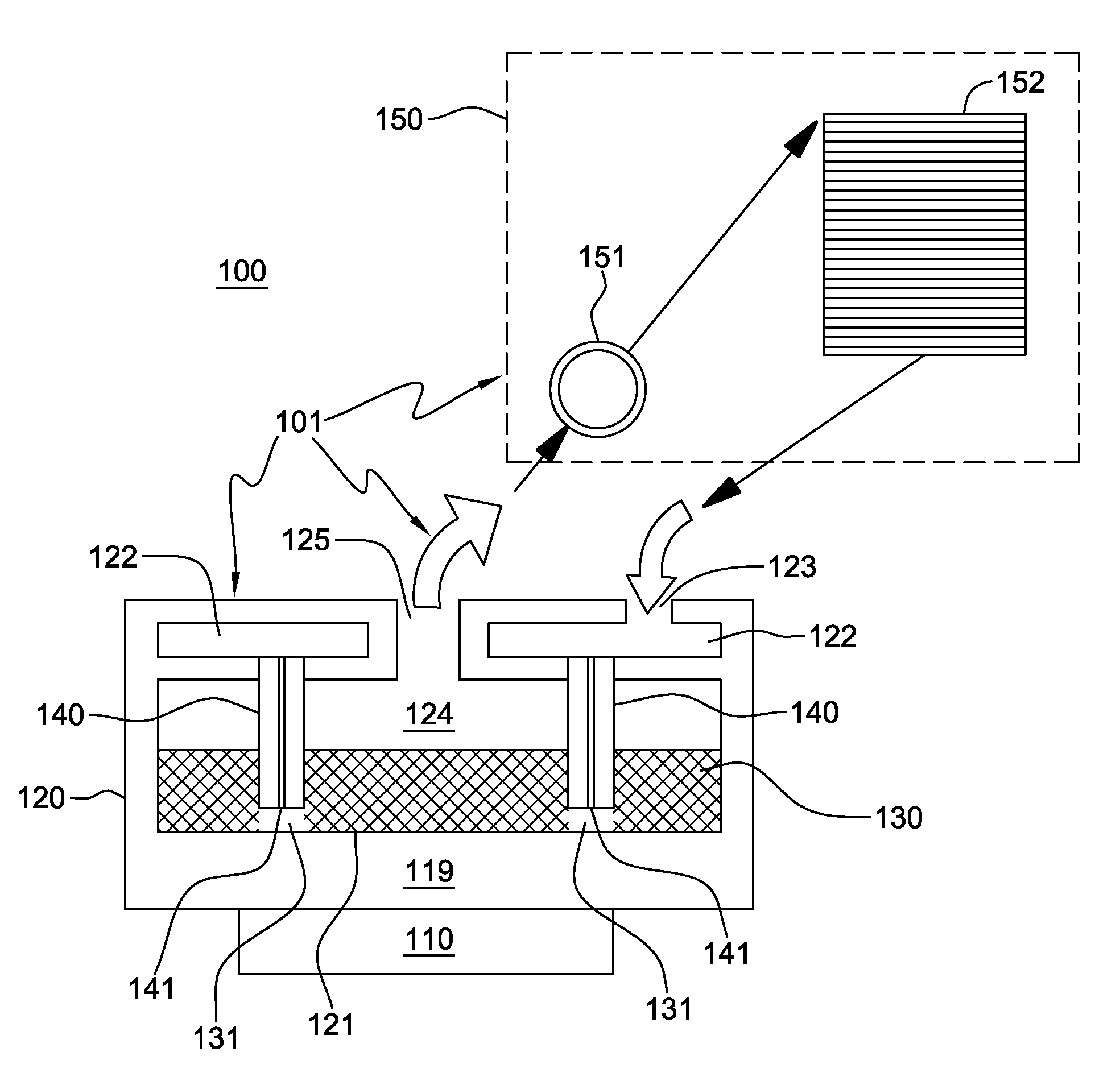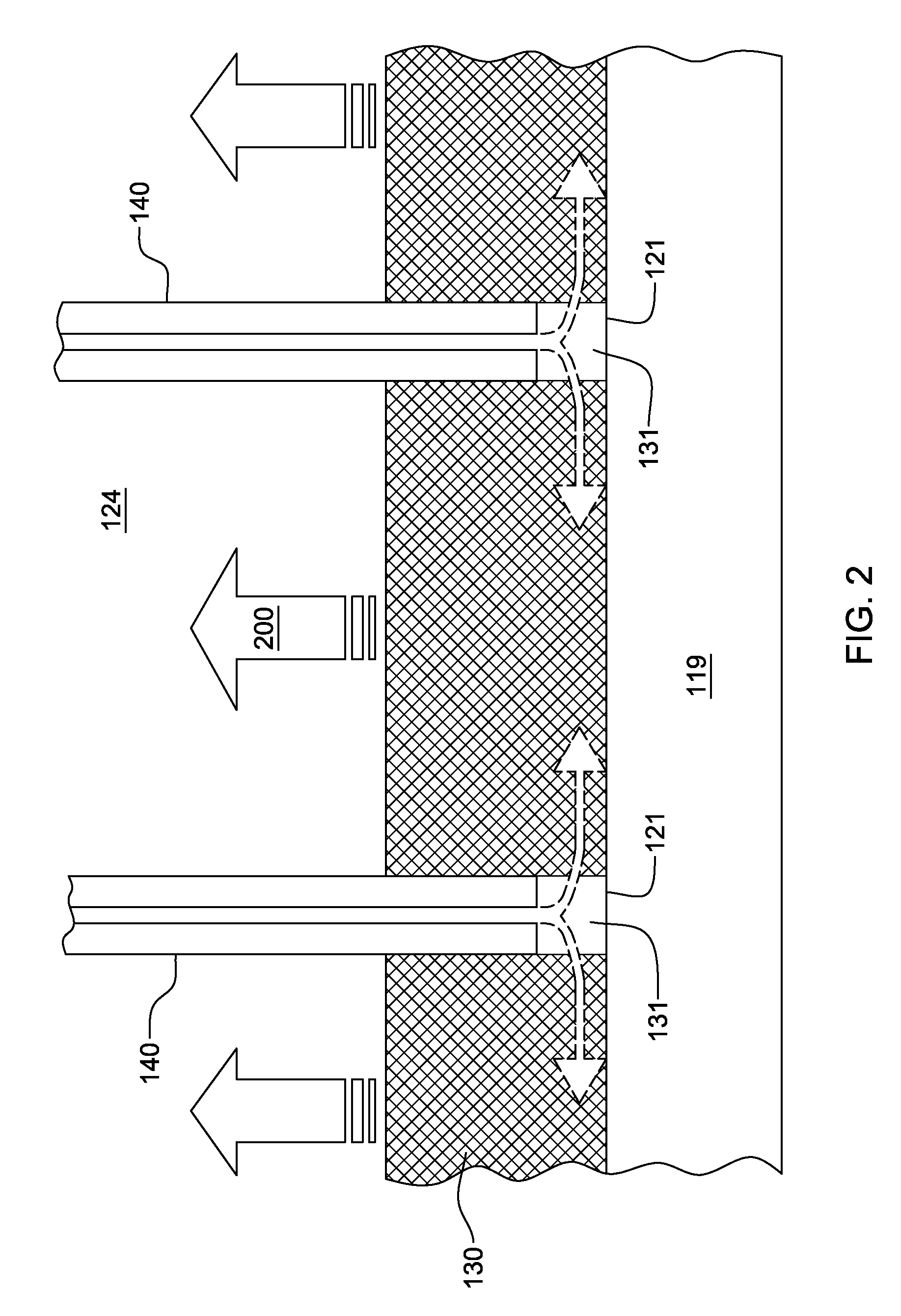Cooling apparatus with thermally conductive porous material and jet impingement nozzle(s) extending therein
a technology of thermally conductive porous materials and cooling apparatuses, which is applied in the direction of electrical apparatus casings/cabinets/drawers, cables, power cables, etc., can solve the problems of increasing device temperatures, thermal runaway conditions, increasing power dissipation, and therefore heat production, and achieves the effect of facilitating the jet impingement of liquid coolant, and facilitating the boiling of liquid coolan
- Summary
- Abstract
- Description
- Claims
- Application Information
AI Technical Summary
Benefits of technology
Problems solved by technology
Method used
Image
Examples
Embodiment Construction
[0016]Generally stated, provided herein are cooling apparatuses, cooled electronic devices and methods of fabrication thereof which comprise a thermally conductive porous material bonded to a surface to be cooled and one or more jet nozzles extending into the thermally conductive porous material for directing liquid coolant onto the surface to be cooled. The surface to be cooled is a substantially planar main surface of a thermally conductive base, which comprises part of (or is coupled to) the electronic device to be cooled. The phrase “cooled electronic device” is used herein to include the heat-generating electronic device to be cooled with the cooling apparatus coupled thereto. In various embodiments, the cooling apparatus may include a vapor-compression heat exchange system or a pumped coolant system.
[0017]“Vapor-compression heat exchange system” means any heat exchange mechanism of the liquid coolant supply characterized as described herein through which refrigerant can circul...
PUM
| Property | Measurement | Unit |
|---|---|---|
| thermally conductive | aaaaa | aaaaa |
| porosity | aaaaa | aaaaa |
| conductive | aaaaa | aaaaa |
Abstract
Description
Claims
Application Information
 Login to View More
Login to View More - R&D
- Intellectual Property
- Life Sciences
- Materials
- Tech Scout
- Unparalleled Data Quality
- Higher Quality Content
- 60% Fewer Hallucinations
Browse by: Latest US Patents, China's latest patents, Technical Efficacy Thesaurus, Application Domain, Technology Topic, Popular Technical Reports.
© 2025 PatSnap. All rights reserved.Legal|Privacy policy|Modern Slavery Act Transparency Statement|Sitemap|About US| Contact US: help@patsnap.com



